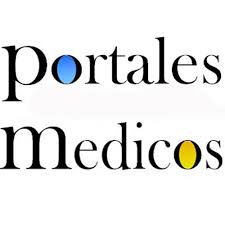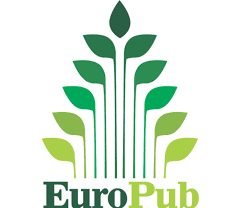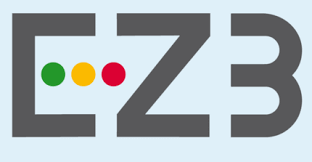Focalidad del nervio oculomotor derecho asociado a SARS COV-2. Reporte de un caso.
Right oculomotor nerve focality associated with SARS COV-2. A case report
Resumen
Desde diciembre de 2019 surge en Wuhan un nuevo SARS-Coronavirus-2 (SARS-CoV-2) asociado a la enfermedad de COVID-19, un evento pandémico. Además de causar neumonía y síndrome respiratorio agudo severo, el SARS-CoV-2 es un agente neurotrópico que se une a la enzima convertidora de angiotensina 2 (ECA2) y utilizando los receptores ECA2 que se encuentran dentro del sistema nervioso central, ingresa causando manifestaciones neurológicas. Debido a que es una enfermedad de reciente aparición y su presentación clínica es bastante variable, su fisiopatología no está completamente dilucidada. Las alteraciones hematológicas como los estados procoagulantes se han asociado a peor pronóstico y a un alto riesgo de producción de eventos cardiovasculares y afecciones de tipo neurológicas. En este artículo se presenta un caso de ictus isquémico focal en un paciente con múltiples comorbilidades en el contexto de COVID-19. Se reporta la presencia de focalidad completa del nervio oculomotor derecho en un masculino de 64 años COVID-19 positivo, un hallazgo infrecuente, por lo que sugerimos realizar estudios seriados de neuroimagen en centros hospitalarios durante el manejo de casos graves de COVID-19 con manifestaciones neurológicas.
Since December 2019 emerges in Wuhan a novel SARS-Coronavirus-2 (SARS-CoV-2) associated to COVID-19 disease, a pandemic event. In addition to COVID-19 pneumonia and severe acute respiratory syndrome, SARS-CoV-2 is a neurotropic agent that binds to angiotensin converting enzyme 2 (ACE2) and using ACE2 receptors found within the central nervous system, enters causing neurological manifestations. Because it is a recent-onset disease and its clinical presentation is quite variable, its pathophysiology is not fully understood. Hematological alterations such as procoagulant states have been associated with a worse prognosis and a high risk of cardiovascular events and neurological conditions. In this article presents a case of focal ischemic stroke in a patient with multiple comorbidities in the context of COVID-19. It is reported the presence of right nerve oculomotor complete focality in a COVID-19 positive 64-year-old male, an infrequent finding, so, we suggest conducting serial neuroimaging studies in hospital centers during the management of severe cases of COVID-19 with neurological manifestations..
Palabras clave
Texto completo:
PDFReferencias
Aguayo, S., Mora, C., Proaño, M., Revelo, E., Molina, P. y Vélez, J. (2020). Accidente cerebrovascular trombótico en paciente con COVID-19. Revista científica digital INSPILIP, 4(2), 1-15. https://doi.org/10.31790/inspilip.v4i2.92.g167
Angel, M. y Young, G. (2011). Metabolic encephalopathies. Neurologic clinics, 29(4), 837–882. https://doi.org/10.1016/j.ncl.2011.08.002
Bayona, H. y Schroeder, N. (2007). Alteraciones hidroelectrolíticas y enfermedad cerebrovascular. En Pérez, G. E. (Ed.), Guía Neurológica 8 Enfermedad Cerebrovascular. 199-208. Bogotá, Colombia: Asociación Colombiana de Neurología. https://www.acnweb.org/es/publicaciones/otras-publicaciones/63-guia-neurologica-8.html
Belghmaidi, S., Nassih, H., Boutgayout, S., El Fakiri, K., El Qadiry, R., Hajji, I., Bourrahouate, A. y Moutaouakil, A. (2020). Third Cranial Nerve Palsy Presenting with Unilateral Diplopia and Strabismus in a 24-Year-Old Woman with COVID-19. The American journal of case reports, 21, e925897. https://doi.org/10.12659/AJCR.92589
Chang, D., Lin, M., Wei, L., Xie, L., Zhu, G., Dela Cruz, C. y Lokesh, S. (2020). Epidemiologic and Clinical Characteristics of Novel Coronavirus Infections Involving 13 Patients Outside Wuhan, China. JAMA, 323(11), 1092-1093. https://doi.org/10.1001/jama.2020.1623
Costello, F. y Dalakas, M. (2020). Cranial neuropathies and COVID-19. Neurology, 95(5), 195-196. https://doi.org/10.1212/wnl.0000000000009921
De Oliveira, M. R., Lucena, A., Higino, T., y Ventura, C. V. (2021). Oculomotor nerve palsy in an asymptomatic child with COVID-19. Journal of AAPOS : the official publication of the American Association for Pediatric Ophthalmology and Strabismus, S1091-8531(21)00051-3. https://doi.org/10.1016/j.jaapos.2021.02.001
Douedi, S., Naser, H., Mazahir, U., Hamad, A. I., y Sedarous, M. (2021). Third Cranial Nerve Palsy Due to COVID-19 Infection. Cureus, 13(4), e14280. https://doi.org/10.7759/cureus.14280
González, S., Garófalo, N., González, A., y Mezquia de Pedro, N. (2021). Infección por COVID-19 y accidente cerebrovascular. Revista Cubana de Investigaciones Biomédicas, 40(1), e884. Recuperado de http://scielo.sld.cu/scielo.php?script=sci_arttext&pid=S0864-03002021000100014&lng=es&tlng=es.
Gu, S. X., Tyagi, T., Jain, K., Gu, V. W., Lee, S. H., Hwa, J. M., Kwan, J., Krause, D., Lee, A., Halene, S., Martin, K., Chung, H. y Hwa, J. (2020). Thrombocytopathy and endotheliopathy: crucial contributors to COVID-19 thromboinflammation. Nature Reviews Cardiology, 1-3. https://doi.org/10.1038/s41569-020-00469-1
Helms, J., Kremer, S., Merdji, H., Clere-Jehl, R., Schenck, M., Kummerlen, C., Collange, O., Boulay, C., Fafi-Kremer, S., Ohana, M., Anheim, M. y Meziani, F. (2020). Neurologic Features in Severe SARS-CoV-2 Infection. New England Journal of Medicine, 382(23), 2268-2270. https://doi.org/10.1056/nejmc2008597
Jaunmuktane, Z., Mahadeva, U., Green, A., Sekhawat, V., Barrett, N., Childs, L., Shankar-Hari, M., Thom, M., Jäger, H. y Brandner, S. (2020). Microvascular injury and hypoxic damage: emerging neuropathological signatures in COVID-19. Acta Neuropathologica, 140(3), 397-400. https://doi.org/10.1007/s00401-020-02190-2
Lu, R., Zhao, X., Li, J., Niu, P., Yang, B., Wu, H., Wang, W., Song, H., Huang, B., Zhu, N., Bi, Y., Ma, X., Zhan F., Wang, L., Hu, T., Zhou, H., Hu, Z., Zhou, W., Zhao, L.,…Tan, W. (2020). Genomic characterisation and epidemiology of 2019 novel coronavirus: implications for virus origins and receptor binding. The Lancet, 395(10224), 565-574. https://doi.org/10.1016/s0140-6736(20)30251-8
Markus, H. y Brainin, M. (2020). COVID-19 and stroke - A global World Stroke Organization perspective. International Journal of Stroke, 15(4), 361-364. https://doi.org/10.1177/1747493020923472
Saavedra, M., González, F., Parra, L., Parra, P., Quiroga, F., Roncancio, Y., Rueda, C. y Ustariz, J. (2001). Factores de riesgo en enfermedad cerebro vascular isquémica en pacientes menores de 45 años. Revista de la Facultad de Medicina, 49(2), 89-99. https://revistas.unal.edu.co/index.php/revfacmed/article/view/19744
Sanoja, A. (2015). Relación del sodio plasmático con la evolución neurológica en pacientes con enfermedad cerebrovascular hemorrágica (Tesis de postgrado, Universidad de Carabobo – Núcleo Aragua). https://www.acnweb.org/es/publicaciones/otras-publicaciones/63-guia-neurologica-8.html
Sepehrinezhad, A., Shahbazi, A. y Negah, S. (2020). COVID-19 virus may have neuroinvasive potential and cause neurological complications: a perspective review. Journal of NeuroVirology, 26(3), 324-329. https://doi.org/10.1007/s13365-020-00851-2
Zhai, P., Ding, Y. y Li, Y. (2020). The impact of COVID-19 on ischemic stroke: A case report. The impact of COVID-19 on ischemic stroke: A case report, 5-6. https://doi.org/10.21203/rs.3.rs-20393/v1
Enlaces refback
- No hay ningún enlace refback.
Depósito Legal Electrónico: ME2016000090
ISSN Electrónico: 2610-797X
DOI: https://doi.org/10.53766/GICOS
| Se encuentra actualmente registrada y aceptada en las siguientes base de datos, directorios e índices: | |||
 | |||
 |  |  |  |
 |  | ||
 |  |  |  |
 |  |  |  |
 |  |  |  |
 |  |  |  |
![]()
Todos los documentos publicados en esta revista se distribuyen bajo una
Licencia Creative Commons Atribución -No Comercial- Compartir Igual 4.0 Internacional.
Por lo que el envío, procesamiento y publicación de artículos en la revista es totalmente gratuito.

